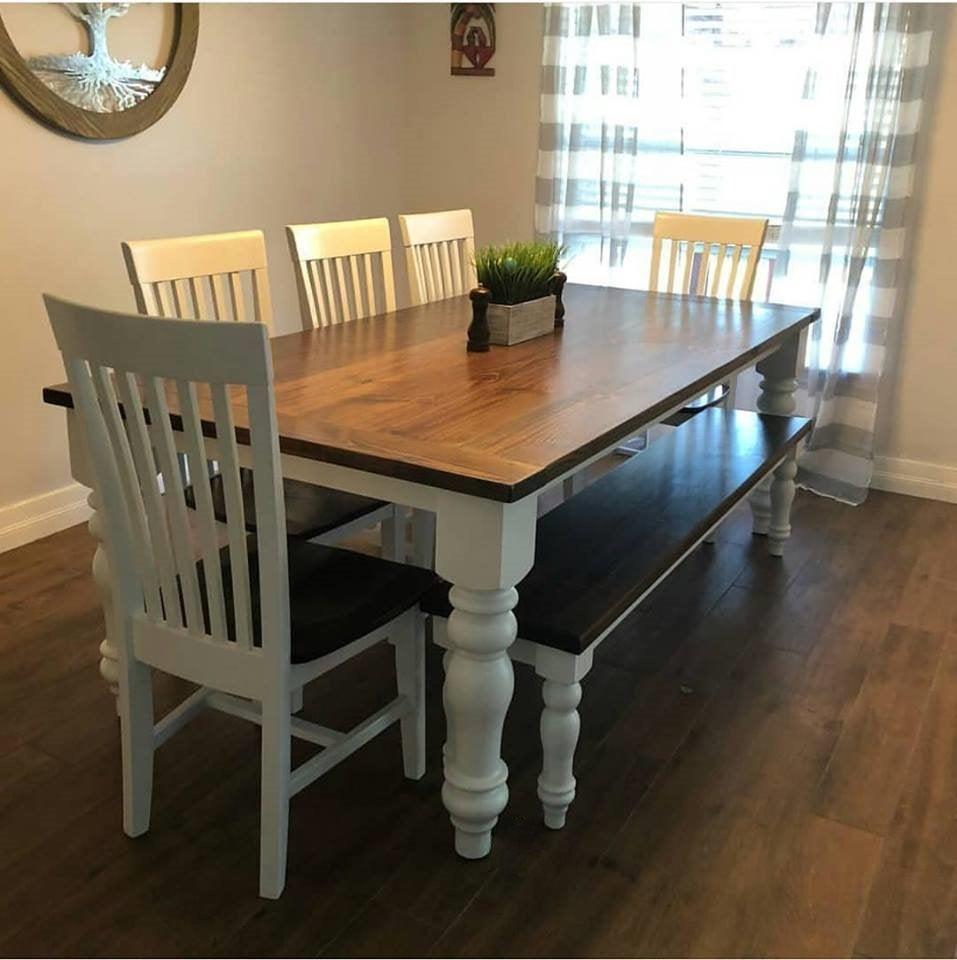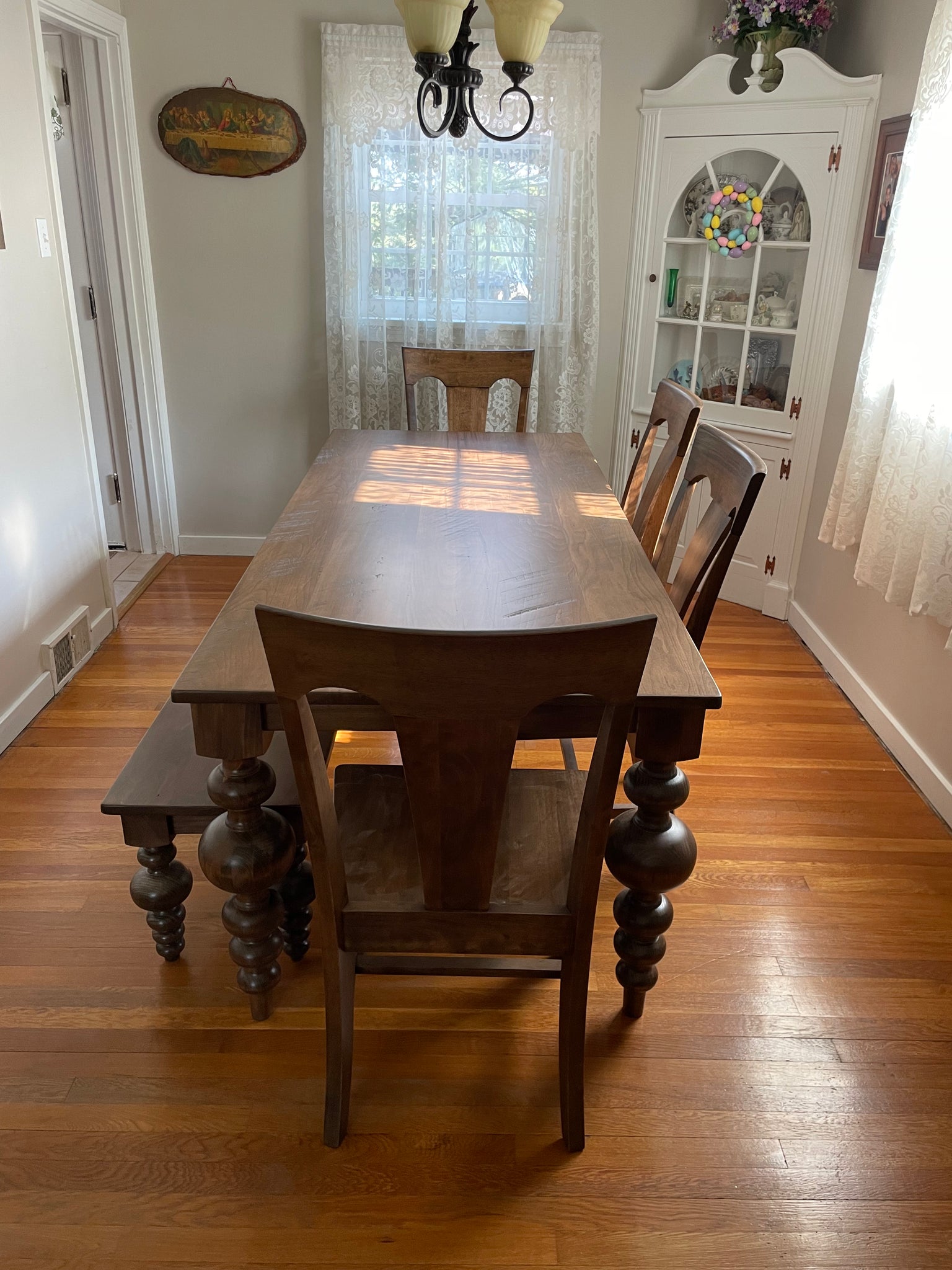An In-depth Look at Table Leg Styles: Locating the Suitable Match
Picking the best table leg design is essential for both aesthetic appeal and useful functionality. Standard 4 legs provide timeless sophistication and stability, while the pedestal base offers boosted legroom and a contemporary appearance. For those with bigger tables, trestle legs make sure strong support, whereas hairpin legs present a mid-century modern-day ambiance with their minimal style. The x-shaped legs blend modern design with enhanced stability. Each of these options brings unique advantages, making the selection much more than simply an issue of choice. Explore even more to uncover which style completely enhances your eating space and way of living.
Conventional 4 Legs
Among the different sorts of eating table leg designs, the conventional four-leg layout stays a classic option for lots of families. This timeless arrangement supplies a harmonious blend of performance and appearances, making it a perennial fave. Four legs give balanced assistance, making certain the table continues to be secure and efficient in bearing significant weight. This is specifically useful for houses that frequently host huge gatherings or utilize their table for multiple functions, such as work or crafting.
From a visual point of view, the conventional four-leg design can be easily adjusted to various indoor designs. Whether crafted from wood, metal, or a mix of materials, these legs can be intricately carved, streamlined and minimalistic, or anything in between. Their adaptability permits them to enhance both rustic and modern settings perfectly.
Additionally, the simple framework of the four-leg style helps with ease of motion and placement within an area. Unlike more complex bases, this design reduces blockages, giving ample legroom for diners. In recap, the conventional four-leg table leg style weds enduring style with functional functionality, making it a sharp choice for those looking for both form and feature in their eating furniture.
Stand Base
Typically commemorated for its stylish and space-efficient layout, the pedestal base is a distinguished option to the traditional four-leg setup in table leg designs. This distinctive base generally includes a single central column sustaining the tabletop, which can vary in form, from ornately sculpted wood to smooth, modern-day metal. One of the key advantages of the stand base is its ability to make the most of legroom and seating adaptability. Without corner legs, diners are paid for better flexibility of movement, making it a suitable selection for round and oval tables that promote even more intimate and inclusive celebrations.
Furthermore, the pedestal base's central assistance can take care of substantial weight, enabling using heavier tabletops, such as marble or thick hardwood. This strength combined with its visual convenience makes the stand base a preferred selection in both typical and contemporary interior settings. It can perfectly integrate with various design themes, from classic beauty to minimalist modernity. Furthermore, the central column itself offers a canvas for detailed layouts and artistic expressions, adding an element of visual rate of interest underneath the table. In summary, the pedestal base incorporates capability with design, making it a fine-tuned and practical alternative for varied dining settings.
Trestle Legs
Trestle legs give a robust and timeless structure for dining tables, defined by their horizontal cross-bracing and strong assistance beams. Stemming from medieval times, this layout has evolved yet kept its vital framework, making it a perennial fave in both conventional and modern settings. The main trestle light beam, usually supported by two or even more vertical articles, supplies exceptional security, allowing for larger table sizes without the requirement for added legs.
A considerable advantage of trestle leg tables is the enough legroom they provide. Unlike tables with 4 edge legs, the absence of obstructions at the table's sides provides unobstructed room for chairs and diners, enhancing convenience and accessibility. This makes trestle tables suitable for accommodating larger events, whether in an eating room or a banquet hall.
From rustic farmhouse to sleek modern styles, trestle legs can be personalized to fit private Learn More Here tastes. Their long-lasting allure and useful advantages make trestle legs an engaging selection for those looking for both design and usefulness in their eating table.
Barrette Legs

The charm of hairpin legs hinges on their simpleness and convenience - dining room table legs. Offered in a variety of materials, including steel and brass, they can be completed in numerous colors to complement different indoor designs. Whether coupled with a rustic wooden tabletop or a modern glass surface, barrette legs easily blend functionality with a touch of classic beauty
Longevity is another noteworthy attribute of barrette legs. In spite of their fragile appearance, these legs are engineered to bear significant weight, ensuring the dining table stays stable and protected. Furthermore, they are fairly very easy to mount, making Recommended Site them a preferred choice for DIY enthusiasts and professional furniture makers alike.
X-Shaped Legs

Built from products such as steel, timber, or a combination of both, X-shaped legs can be customized to match numerous layout preferences. Steel legs typically provide a streamlined and commercial feel, perfect for loft-style apartments and modern-day dining spaces.
Additionally, the design behind X-shaped legs ensures also weight circulation, minimizing the risk of wobbling and improving toughness. This makes them specifically well-suited for larger dining tables that require additional support. In essence, X-shaped legs blend useful design with modern aesthetic appeals, making them an ageless option for varied dining atmospheres.
Conclusion
An extensive understanding of table leg designs discloses the distinctive features and advantages of each layout. Standard four legs supply security and ageless charm, while pedestal bases provide legroom and a structured look. Trestle legs make sure More Help durable assistance for larger tables, and hairpin legs present a mid-century modern-day aesthetic. X-shaped legs combine modern layout with boosted security. Selecting the appropriate leg design makes sure both practical and aesthetic satisfaction in any type of dining room.
Comments on “Discover the Best Materials for Dining Room Table Legs for Every Design”